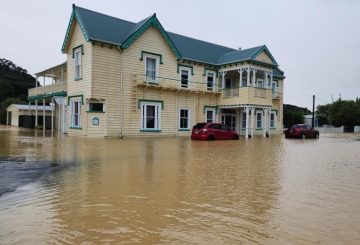ニュージーランドの極北地区議会は、一部の町の水道へのフッ化物の添加を2年延期することを決議しました。この決定は、保健局長のアシュリー・ブルームフィールド卿が、2022年に14の自治体に公共用水道のフッ素化を指示した後に下されました。極北地区議会は、今年6月30日までにカイタイアとケリケリの水へのフッ化物の添加を開始する予定でした。
しかし、市議会議でヒルダ・ハルキヤード・ハラウィラ市議会議員は、期限を2026年6月に延長することを提案しました。彼女は、多くの人々が貧しくホームレスである極北地域にとって、フッ素添加の費用は高すぎると主張した。彼女は、そのお金は飲料水の水質改善や歯科医療に使ったほうがよいと提案しました。その動議は9票対1票で支持された。
ノースランド・ウォッチグループのメンバーであるデブ・ロック・エバンス氏も、議会にフッ素化処理を延期するよう求めた。彼女は、保健局長がフッ素添加を命じる際に権利章典を考慮していなかったという2021年の高等裁判所の判決により、議会は法的リスクに直面する可能性があると警告した。
会議後、フッ化物反対運動家のマイケル・フェイエン氏は、この投票は「良いスタートだ」と説明した。同議員は、政府のフッ素化命令に疑問を呈する全国の他の議会に加わったことについて、同協議会を称賛した。
議会が水供給のフッ素化を行わず、延長も認められない場合、最高20万ドルの罰金が科せられる可能性があり、違反が続いている場合は1日1万ドルの罰金が科せられる可能性があります。フッ素添加装置の設置費用は460万ドルで、ランニングコストとして毎年10万ドルが追加されると予想されています。
2021年、新しい法律により、フッ素添加に関する決定の責任が地方議会から保健省に移管されました。アシュリー・ブルームフィールド卿は、フッ素添加は虫歯を予防する安全で手頃な価格で効果的な方法であると述べています。さらに、フッ素添加水は赤ちゃんや高齢者を含め、誰にとっても安全に飲むことができると付け加えました。




























































